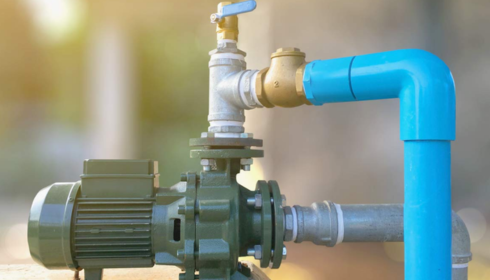The Ground Beneath Our Feet: How Oklahoma’s Hidden Energy Source Is Changing Home Comfort

There’s something oddly poetic about finding warmth in the ground. Long before we built power plants or strung electrical lines across the horizon, the Earth had already been storing heat—quietly, consistently, and endlessly. It’s one of nature’s best-kept secrets. And now, people across Oklahoma are learning to harness that hidden power to heat and cool their homes more efficiently.
For a state known for its wild weather—summers that sizzle and winters that sting—comfort comes at a price. But there’s a quiet energy revolution happening right under our boots, and it’s reshaping how homeowners think about comfort, costs, and sustainability. This isn’t futuristic technology. It’s practical, proven, and ready for the here and now. Welcome to the world of oklahoma geothermal systems.
The Simple Brilliance Beneath the Surface
It sounds complex, but the concept is remarkably simple. Geothermal systems take advantage of the Earth’s constant underground temperature—usually around 55°F in Oklahoma—to move heat rather than create it. In winter, the system draws warmth from the ground and transfers it indoors. In summer, it reverses the process, pushing unwanted heat back underground where it dissipates naturally.
Unlike traditional HVAC systems that rely on burning fuel or fighting extreme air temperatures, geothermal units work in harmony with nature. They don’t create heat—they just move it around, and that efficiency makes them incredibly energy-friendly.
If you’ve ever wished for a heating and cooling system that doesn’t hum, clank, or fail you during a heatwave, this is it.
Oklahoma’s Natural Advantage
Few places are better suited for geothermal systems than Oklahoma. The state’s soil composition and relatively moderate ground temperatures make it ideal for installation. Whether you’re in Tulsa, Norman, or out in the quiet stretches between, the land itself provides the perfect foundation for this kind of energy system.
Traditional systems have to fight Oklahoma’s weather extremes—those blistering August afternoons and icy January mornings. But geothermal doesn’t flinch. It pulls steady, predictable energy from underground, where the temperature doesn’t care what’s happening above.
For homeowners, that means year-round comfort without the wild fluctuations in energy bills that come with conventional systems.
How It Actually Works (Without the Tech Jargon)
Imagine a series of underground pipes—usually made of high-strength polyethylene—buried horizontally or vertically beneath your yard. Inside, a water-based solution circulates through the loops, absorbing and transferring heat.
A heat pump inside your home connects to this network. When you need warmth, the pump pulls heat from the ground loop and distributes it through your ductwork. When you need cooling, it reverses direction and dumps excess heat back into the earth.
It’s like nature’s own thermostat—steady, reliable, and efficient.
Once installed, the system is largely invisible. There’s no outdoor condenser buzzing away or loud fan blowing hot air into the yard. It’s quiet. Peaceful. Almost like your home starts breathing in sync with the planet.
The Cost Question Everyone Asks
Let’s be honest—geothermal systems aren’t cheap to install. The initial investment can be higher than a standard air conditioning or furnace setup. But the long-term payoff is undeniable.
You’re looking at energy savings of up to 70% on heating and cooling bills. Add in the fact that geothermal units can last 20 to 25 years, and the underground loop system itself can last more than 50, and suddenly, the math starts making sense.
Then there are the tax incentives and rebates. Both federal and state programs often reward homeowners who make the switch to renewable energy. Oklahoma residents, in particular, can find excellent support through local utility companies and energy efficiency programs.
So yes, it’s an investment—but it’s one that pays you back year after year, quietly and consistently.
Why the Right Contractor Matters
The key to a successful geothermal installation is expertise. This isn’t the kind of project you want handled by a general HVAC crew trying their hand at something new. You’ll want certified geothermal professionals who understand soil composition, loop design, and energy flow.
Searching for a reliable geothermal service near me can feel a bit overwhelming at first, but a good contractor will make the process painless. They’ll evaluate your property, perform heat-load calculations, and recommend the most efficient design for your home.
The best contractors also stick around. Geothermal isn’t a “set it and forget it” system—it needs occasional maintenance, performance checks, and fluid monitoring. Working with the right company means you’ll have long-term support from people who genuinely understand your system inside and out.
Living With Geothermal: What It Feels Like
The first thing most homeowners notice is the silence. Without an outdoor condenser or roaring furnace, geothermal systems are whisper-quiet. The second thing they notice is the comfort. There are no cold spots, no blasts of hot or frigid air—just a steady, consistent temperature throughout the house.
And then comes the moment when that first energy bill arrives, and you realize just how much less you’re spending. That’s usually when people start smiling.
Another perk? Geothermal systems are environmentally friendly in the truest sense. They don’t rely on burning fossil fuels or producing carbon emissions. In a state that’s seen its fair share of energy debates, choosing geothermal feels like taking a step in the right direction—toward cleaner living and smarter energy use.
Maintenance: Less Hassle, More Longevity
Geothermal systems don’t need the kind of frequent tune-ups traditional HVAC setups demand. There are fewer moving parts and no outdoor components exposed to weather damage. A routine check once or twice a year is usually enough to keep everything running smoothly.
And because the loops are buried underground, they’re protected from the elements. They don’t rust, freeze, or corrode the way above-ground systems can. It’s one of the reasons homeowners love geothermal—once it’s installed, it just quietly does its job year after year.
Oklahoma’s Geothermal Future
As energy prices fluctuate and environmental awareness grows, geothermal systems are moving from “alternative” to “mainstream.” More and more homes, schools, and businesses across the state are switching to geothermal, not just for sustainability, but because it makes financial sense.
The potential here is huge. Imagine entire neighborhoods powered by the earth itself—heating, cooling, and even producing hot water from the same underground network. Oklahoma has the resources, the climate, and the know-how to lead that shift.
And for homeowners looking ahead, this isn’t just about today’s comfort—it’s about creating homes that are ready for the next generation.
Wrapping It Up
When you think about it, geothermal energy is less about innovation and more about rediscovery. The Earth has been storing this steady warmth for millions of years. All we’re doing now is learning how to use it wisely.
In Oklahoma, where the land has always been a source of strength, geothermal feels like a natural evolution. It’s reliable, quiet, sustainable—and most importantly, it works.
So, if you’ve been daydreaming about a home that’s comfortable through every season, one that doesn’t depend on fuel deliveries or unpredictable utility rates, maybe it’s time to look down—literally. The future of energy might already be under your backyard.






